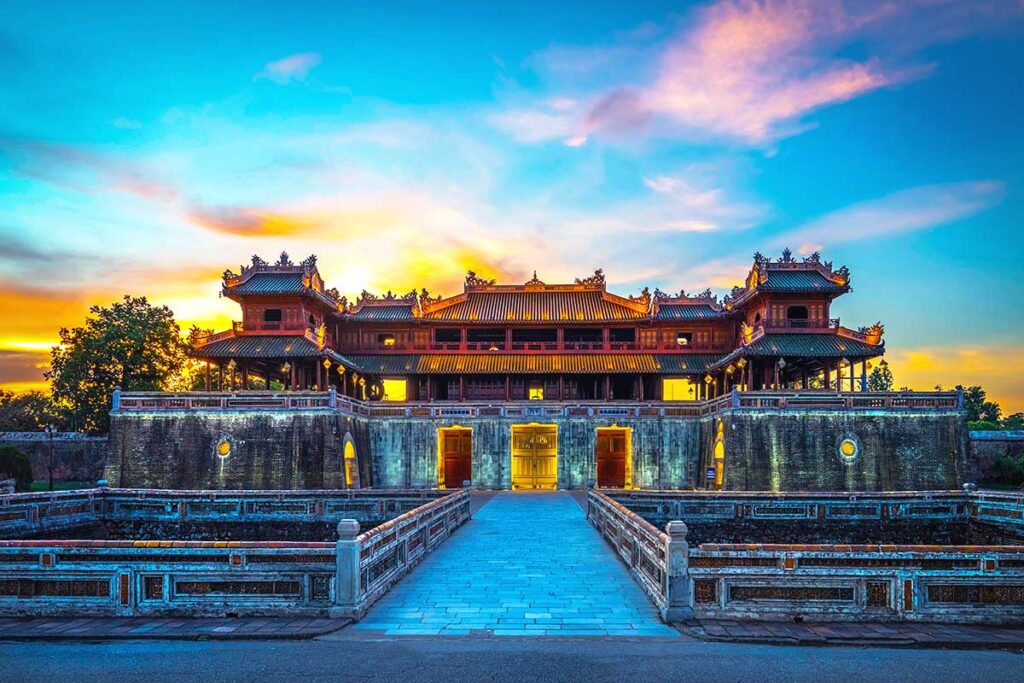What is Thai Hoa Palace like?

Thai Hoa Palace is one of the most important and iconic buildings inside the Hue Imperial City. Built in 1805, it served as the throne hall of the Nguyen emperors — a grand space used for royal ceremonies, official audiences, and state rituals. The palace stands at the heart of the complex, aligned along its central axis, and is known for its yellow-tiled roof, richly decorated wooden pillars, and the original imperial throne still on display today. A visit offers a rare glimpse into the formal world of Vietnam’s last royal dynasty.
History of Thai Hoa Palace
Constructed in 1805 by Emperor Gia Long, Thai Hoa Palace marked the political and ceremonial heart of the newly founded Nguyen capital. It hosted key events such as coronations, royal birthdays, diplomatic receptions, and other rituals that affirmed the emperor’s divine right to rule. The imperial throne, placed at the center of the hall, was strictly reserved for the emperor — a visible reminder of his supreme status. For over a century, it remained the stage for the most formal expressions of power, continuing to be used until the end of the monarchy in 1945.
Architecture & symbolism
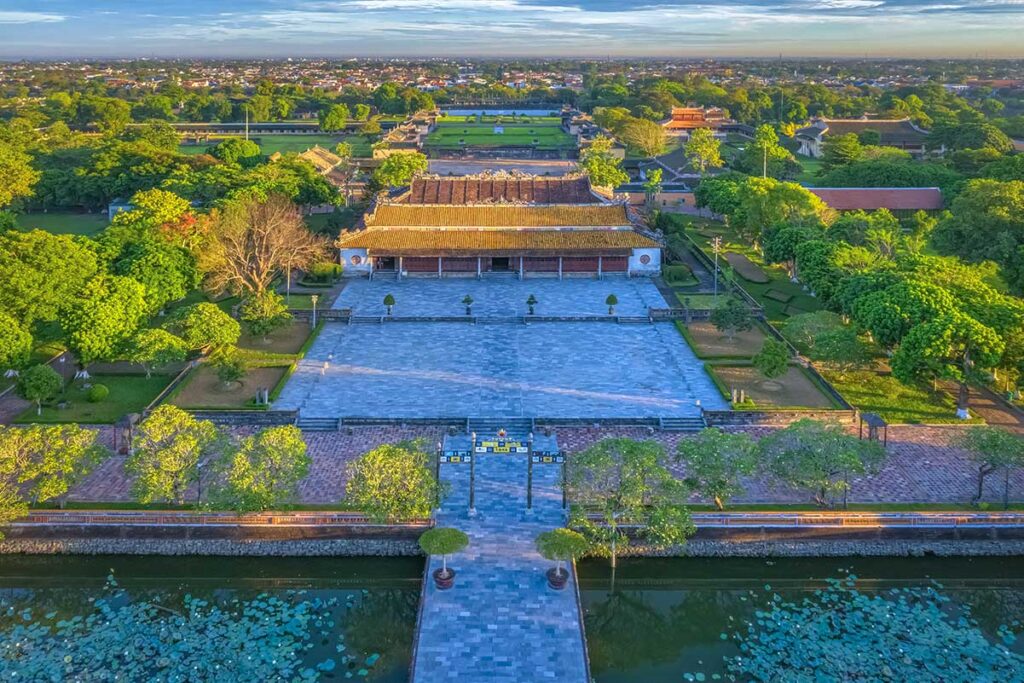
Thai Hoa Palace is a striking example of traditional Vietnamese imperial architecture, blending symbolic design with strict Confucian order. The building features a two-tiered roof covered with yellow glazed tiles — a color reserved exclusively for royalty — and sits precisely aligned with the central axis of the Hue Imperial City, reinforcing its importance within the complex.
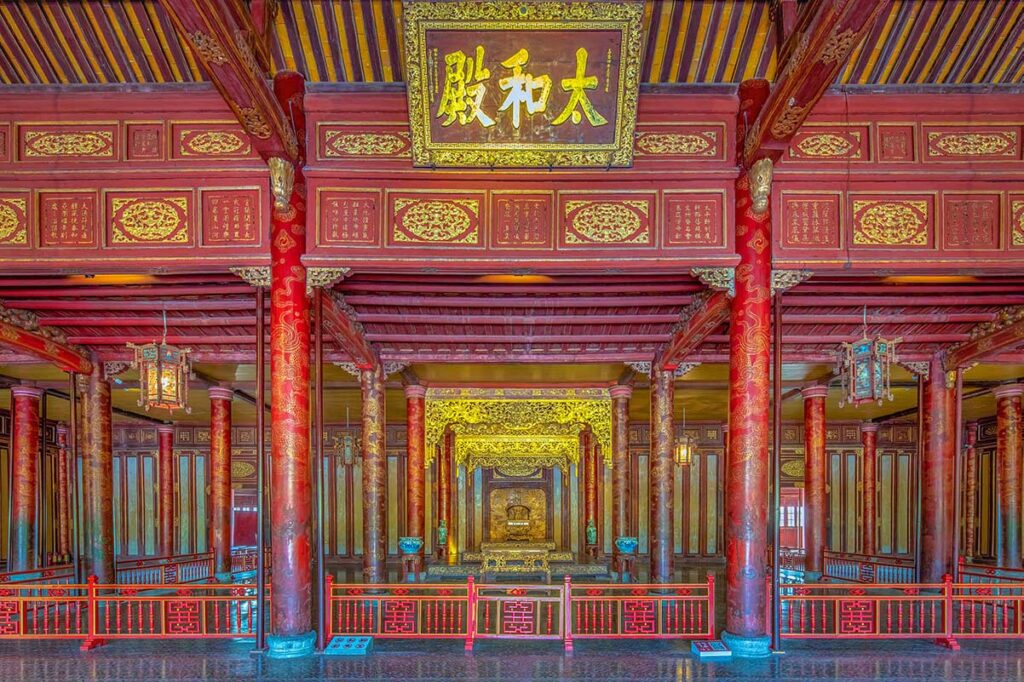
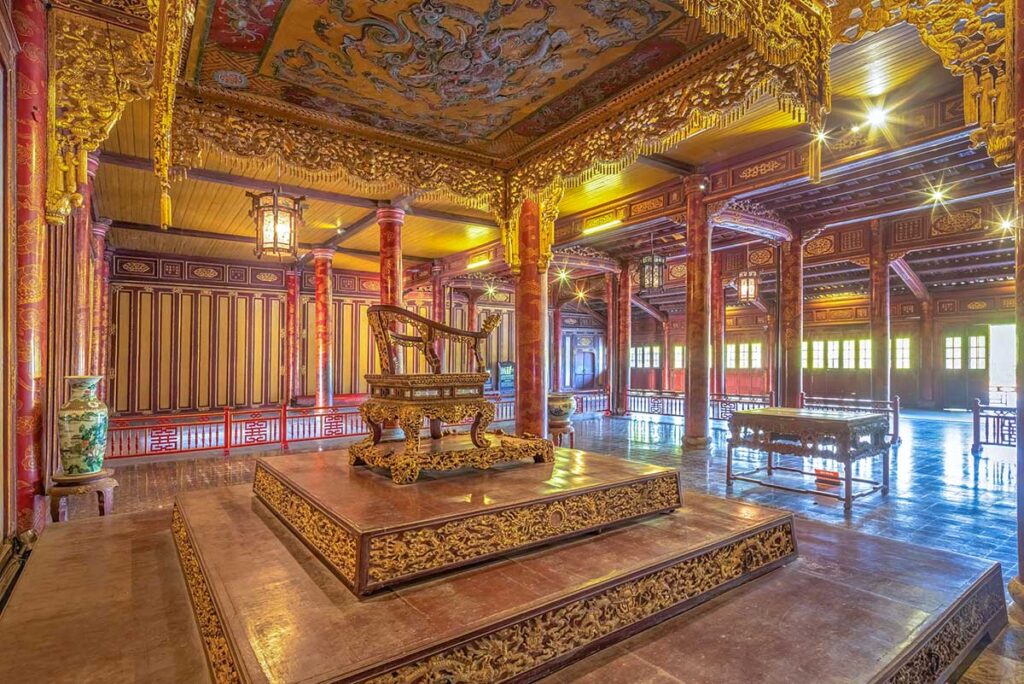
Inside the hall, 80 massive wooden pillars, painted in deep red and decorated with golden dragons, support the roof and create a sense of solemn grandeur. These dragons, symbols of imperial authority, appear throughout the palace — especially around the ornate imperial throne, which stands on a raised platform at the rear of the hall. Every element of the layout, from the symmetrical structure to the decorative motifs, was carefully chosen to emphasize the emperor’s power and the heavenly mandate of the Nguyen dynasty.
The royal court ceremonies
Thai Hoa Palace was the formal stage for major court ceremonies, where the emperor appeared in full regalia to address his officials and conduct state rituals. During these events, mandarins were arranged according to strict hierarchy, with civil mandarins on the left and military mandarins on the right, all standing in rows beneath the open-air Great Ceremony Courtyard just outside the hall.
The ceremonies were known for their visual grandeur — mandarins wore color-coded robes, bronze drums and ceremonial music accompanied each appearance, and all eyes were fixed on the emperor seated at the center of the palace. The throne, elevated above the rest of the hall, served not only as a seat of power but as a symbol of stability and unity. These events reinforced the emperor’s divine status and projected the order and legitimacy of the Nguyen dynasty to all who witnessed them.
Visiting Thai Hoa Palace today
Today, Thai Hoa Palace is one of the best-preserved structures within the Hue Imperial City and remains a highlight for visitors. The original imperial throne still stands inside the hall, surrounded by carefully restored architectural details that reflect the grandeur of Vietnam’s imperial past.

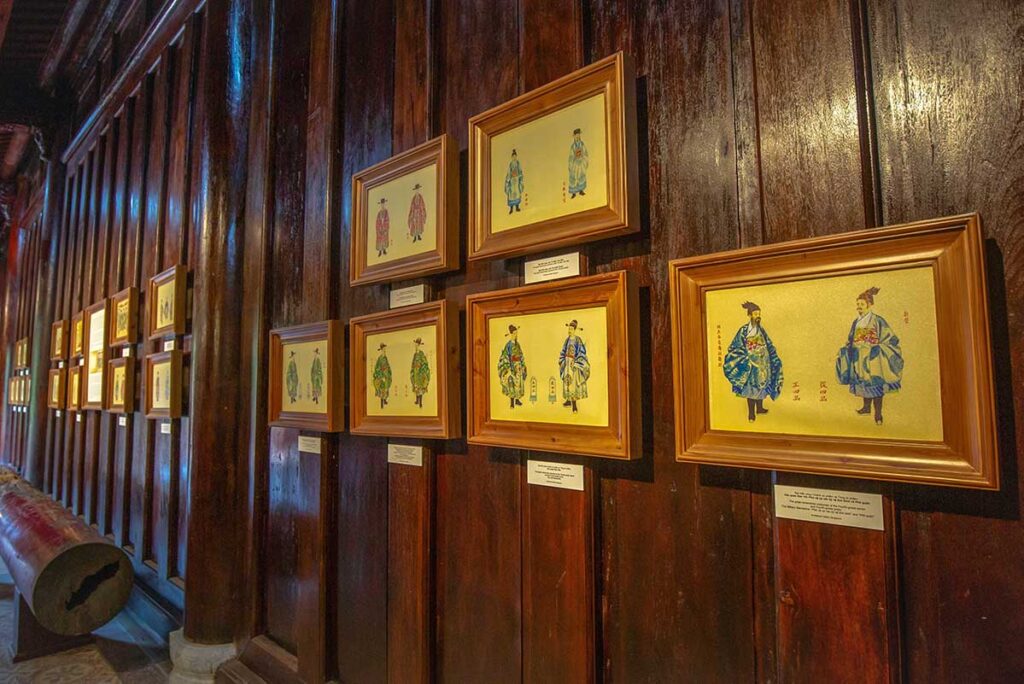
The palace is open to all visitors with a general entrance ticket to the Hue Imperial City. Stepping inside, you immediately feel the solemnity and scale of the royal court — a rare opportunity to experience the formal atmosphere of Nguyen dynasty power and ceremony.
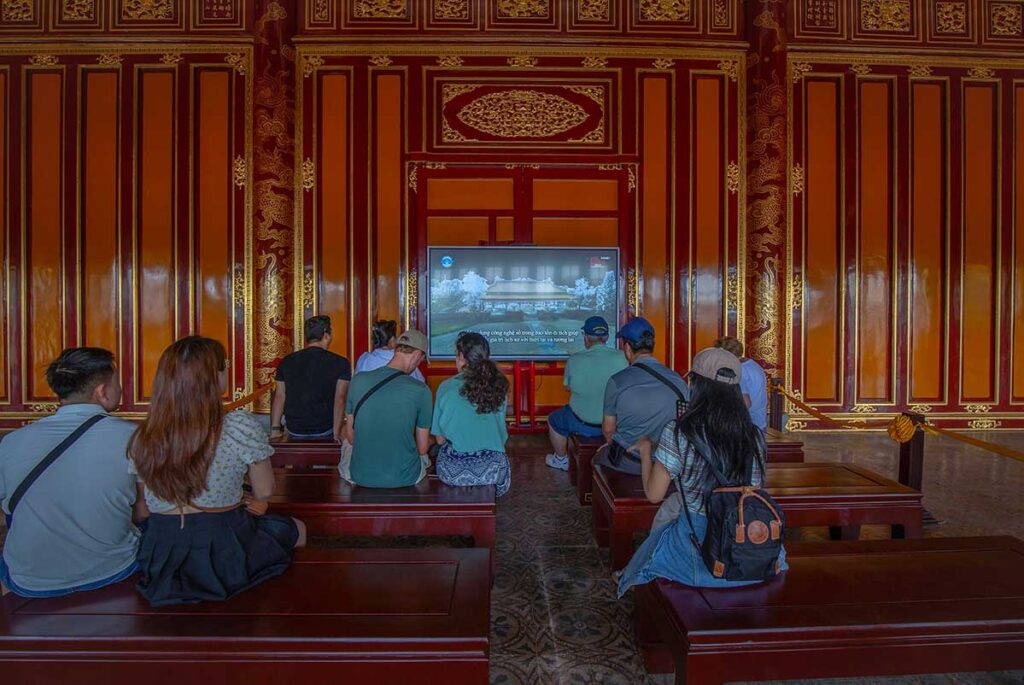
Nearby highlights inside the Imperial City
Thai Hoa Palace is located along the central axis of the Hue Imperial City, making it easy to combine with other major sights nearby — all within walking distance:
- Dai Trieu Nghi (Great Ceremony Courtyard): The large ceremonial square directly in front of the palace, where mandarins gathered for official court events.
- To Mieu Temple Complex: A beautifully restored ancestral temple honoring past Nguyen emperors.
- Royal Theatre (Duyet Thi Duong): The oldest surviving court theatre in Vietnam, where traditional performances are still held.
- Nine Dynastic Urns: Bronze urns representing the first nine emperors of the Nguyen Dynasty, each richly decorated with symbolic motifs.
For a full overview of all the main sights and travel tips, read our complete guide to Hue Imperial City
Hue Historical City Tour
- Includes Hue Imperial City, royal tombs, temples, and a dragon boat ride on Perfume River.
- Options Small group or private tour with hotel pickup
More imperial heritage in Hue
Hue is filled with other impressive Nguyen Dynasty monuments beyond the Imperial City. If you’re interested in exploring more of Vietnam’s royal past, don’t miss these:
- Minh Mang Tomb – A harmonious, symmetrical layout reflecting Confucian values.
- Tu Duc Tomb – A poetic, peaceful setting surrounded by lakes and pine trees.
- Khai Dinh Tomb – An elaborate tomb blending Vietnamese and European design.
- Thien Mu Pagoda – Hue’s most famous riverside pagoda, rich in history and symbolism.
Discover more in our full article: 10 Best Temples, Pagodas & Tombs in Hue


